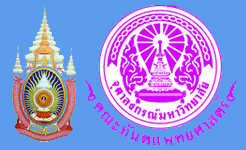
The
tegument of one-week-old and adult flukes of Opisthorchis viverrini were
studied by transmission electron microscopy. The tegument of both stages
is composed of a syncytium formed by processes of the tegumental cells lying
underneath the outer-circular and the inner-longitudinal muscle layers.
The tegument is bounded by trilaminate outer and inner membranes; the former
is coated with a thin glycocalyx, while the latter has short basal infoldings.
There are 4 forms of tegumental granules, namely dense spherical, dense
discoid, light spherical and light discoid granules. Dense spherical and
dense discoid granules have similar dense homogeneous and highly electron-dense
matrices; thus, they may represent different planes of sections of biconcave
granules, and may contribute their content to the formation of the outer
membrane and the glycocalyx. Light spherical and light discoid granules
may be another type of granule whose filamentous content may contribute
to the formation of the microtrabecular network in the tegument. Microvilli
start to develop in one-week-old juveniles and become fully developed in
adult stages. The size, number and cristae of the mitochondria become increasingly
more numerous along with the development of microvilli; in the first-week
juveniles most mitochondria are located in the basal portion of the tegument
while in adults most lie within microvilli underneath the outer membrane.
The tegumental cell is irregular in shape and contains a nucleus with a
prominent nucleolus, abundant rough endoplasmic reticulum, well developed
Golgi complexes, ribosomes, mitochondria and numerous tegumental granules.
These features indicate that the cell is an active secretory cell, whose
product is tegumental granules that may be transported via microtubule-lined
cytoplasmic processes to the syncytium